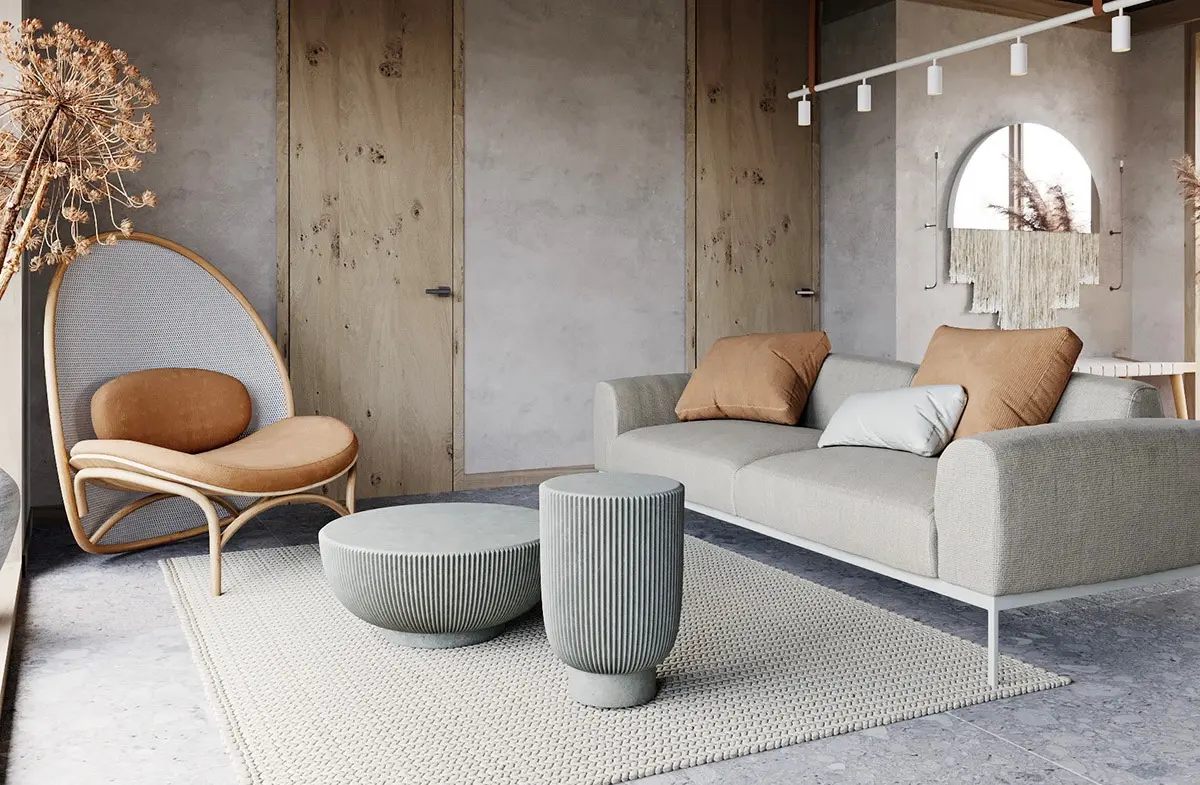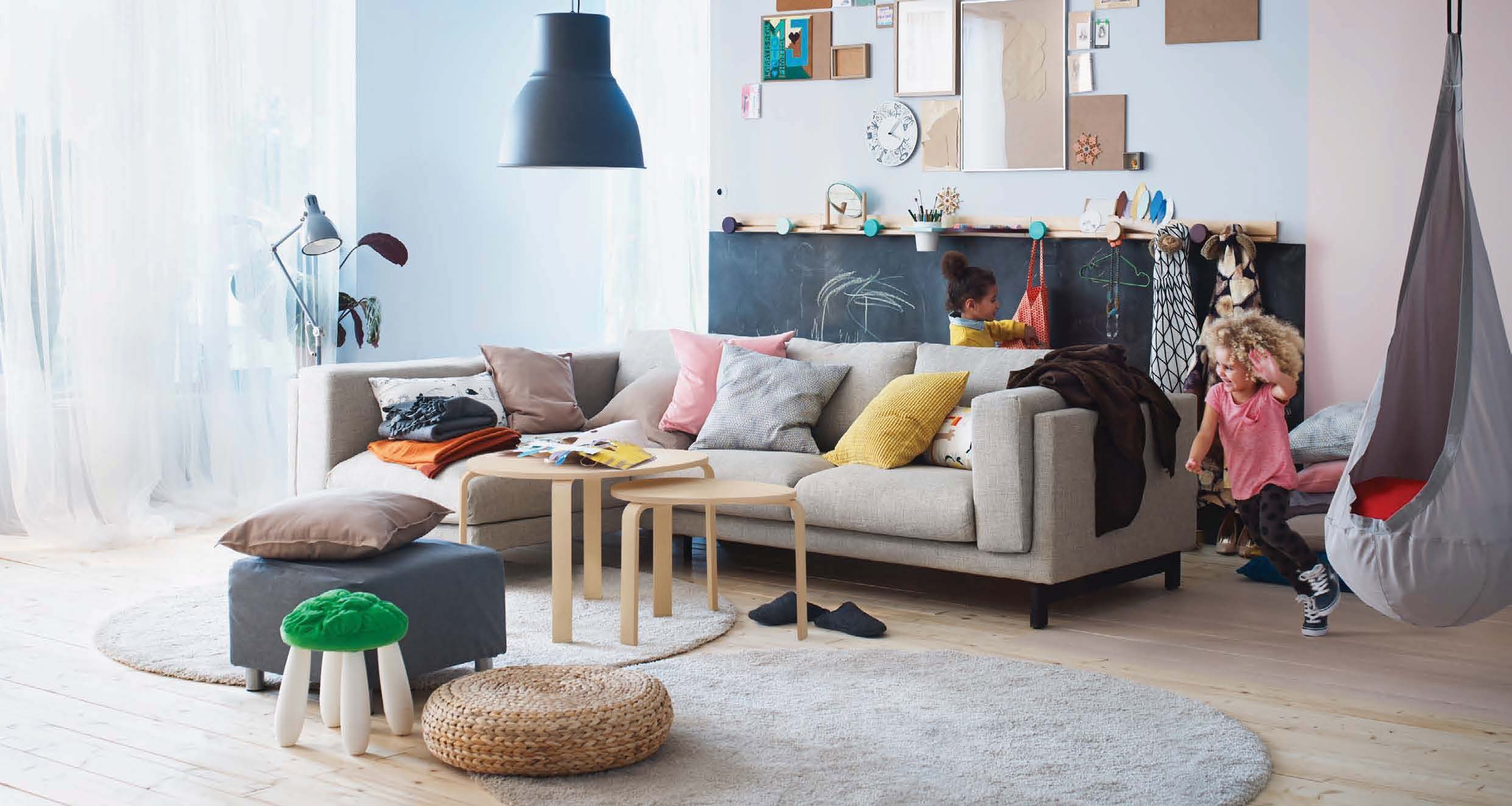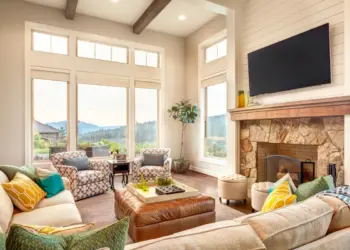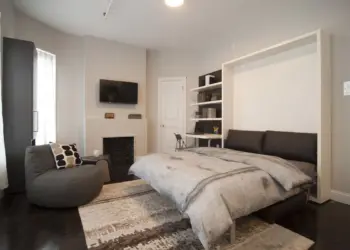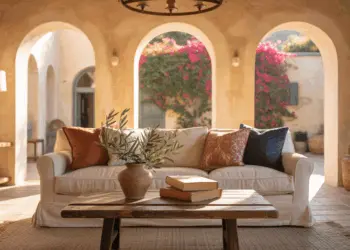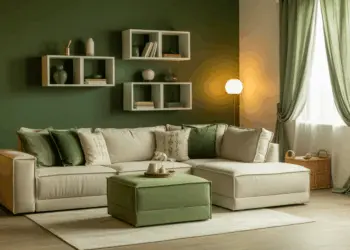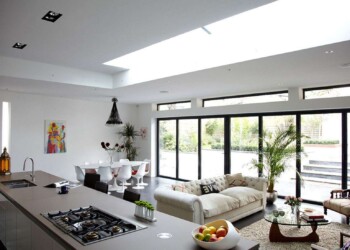Hey there, design enthusiasts! If you’re tired of the cookie-cutter perfection in home decor and itching for something that feels more authentic and real, you’re in for a treat. Today, we’re diving headfirst into the world of Wabi Sabi Living Room Ideas, where imperfection is not just welcomed; it’s celebrated!
So, what’s Wabi Sabi, you ask? Well, it’s a Japanese aesthetic that finds beauty in impermanence and imperfection. Forget about those glossy magazine spreads with perfectly coordinated furniture and sterile environments. Wabi Sabi living rooms are all about embracing the beauty in the flaws, the charm in the weathered, and the allure in the irregular. Intrigued? Let’s explore some fantastic ideas to infuse your living space with the soul-soothing essence of Wabi Sabi
Table of Contents
Why Wabi-Sabi?
- Embracing Imperfection: In a world obsessed with flawless aesthetics, Wabi-sabi offers a refreshing break. It encourages us to appreciate the beauty in things that are imperfect, impermanent, and incomplete.
- Connection to Nature: Wabi-sabi draws inspiration from nature’s cycles, celebrating the aging process and the patina that develops over time. It’s a reminder of the beauty in the natural progression of things.
- Creating Tranquil Spaces: By incorporating Wabi-sabi into your home, you’re not just decorating; you’re creating spaces that evoke tranquility and a sense of calm.
Wabi Sabi Color Palette: Imperfectly Perfect Hues
When it comes to Wabi Sabi living room ideas, the color palette sets the tone. Think of muted tones and earthy hues that mimic nature’s imperfections. Here’s a quick guide to get you started:
- Earthy Greens: Olive, moss, and sage green bring a touch of nature indoors, connecting your space to the organic world.
- Weathered Blues: Opt for faded blues that mimic the look of worn denim. This creates a sense of history and adds a calming vibe to the room.
- Earthy Browns: Embrace the warmth of imperfect browns, ranging from light tan to rich chocolate. These tones ground the space and create a cozy atmosphere.
- Neutral Grays: Choose soft, neutral grays that provide a versatile backdrop for other elements in the room. These subtle hues allow imperfections to shine.
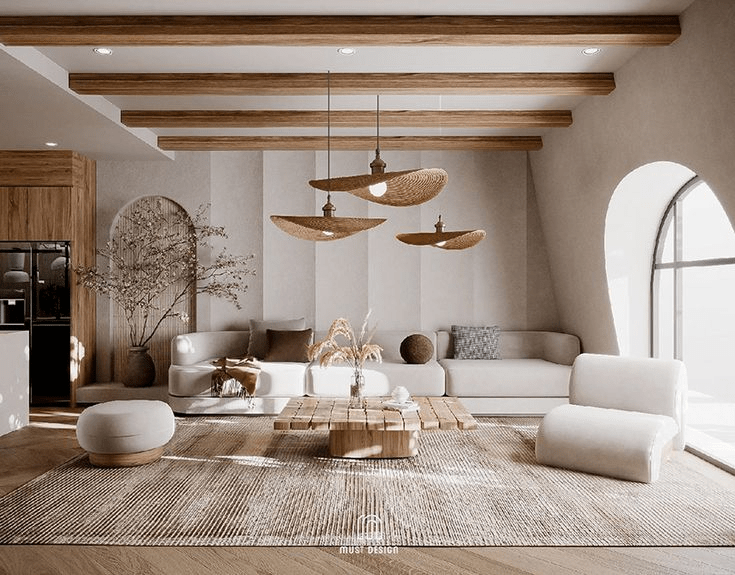
Furniture: The Beauty in Wabi Sabi Imperfections
Now that we’ve set the color stage, let’s talk furniture. Wabi Sabi living room furniture is all about character and charm, with a touch of history. Here’s how to infuse this aesthetic into your seating arrangements:
- Mismatched Seating: Forget about the perfectly coordinated sofa sets. Mix and match different chairs and sofas, each telling its own story. This creates an eclectic style and lived-in feel.
- Natural Materials: Opt for furniture made from natural materials like reclaimed wood, bamboo, and wicker. The imperfections in these materials add to the Wabi Sabi charm.
- Vintage Finds: Scour thrift stores and flea markets for unique, weathered pieces. An old coffee table with a few nicks and scratches? Perfect! These imperfections make each piece special.
- Handcrafted Touches: Embrace handmade items with visible imperfections. A crooked shelf or a slightly uneven table adds authenticity to your living room.
- Weathered Wood Elegance: There’s something inherently charming about weathered wood. The nicks, knots, and uneven surfaces tell a story of time and use, making each piece unique.
- Handcrafted Ceramics: Bring the touch of the artisan into your home with handcrafted ceramics. Irregular shapes and subtle imperfections add character and depth.
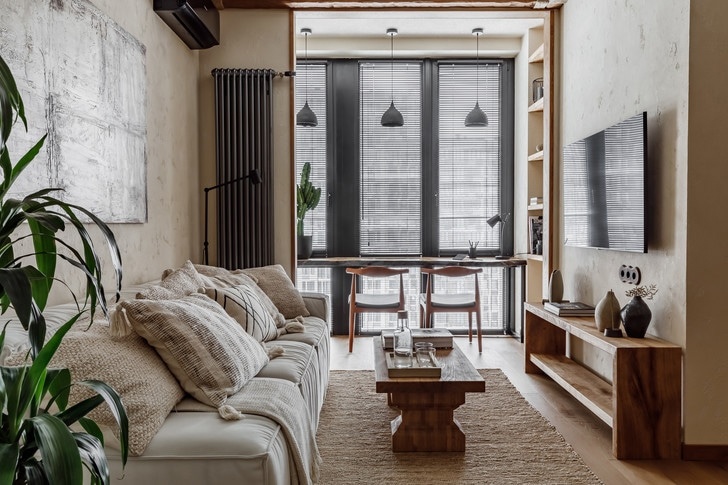
Decor Elements: Nature’s Artistry
Wabi Sabi living room ideas are incomplete without bringing a touch of the outdoors inside. Incorporate natural elements that celebrate the beauty of imperfection:
- Dried Flowers and Plants: Instead of fresh blooms, go for dried flowers and plants. Their withered beauty adds a poetic touch to your living space.
- Rustic Pottery: Display handmade, imperfect pottery with visible glaze irregularities. These pieces add a sense of craftsmanship and uniqueness.
- Exposed Wood Beams: If your living room has exposed beams, leave them as they are. The knots, cracks, and uneven textures tell a story of the wood’s journey.
- Textured Fabrics: Choose fabrics with a tactile quality-linen, wool, and cotton with visible weaves. These materials age gracefully, showcasing their imperfections over time.
- Muted Color Palette: Wabi-sabi aesthetics are grounded in a muted and earthy color palette. Think of throw pillows, blankets, and small decor items in soft greens, muted blues, and neutral tones that mimic the colors of nature.
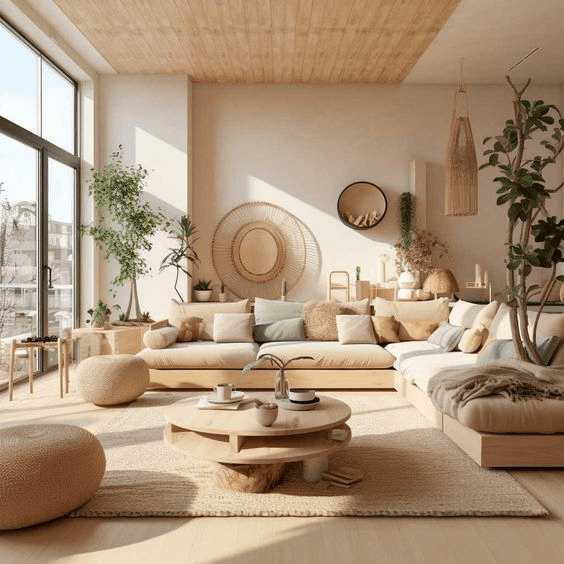
Lighting: Softly Illuminating Imperfections
Lighting plays a crucial role in creating the right ambiance for a Wabi Sabi living room. Avoid harsh, artificial lighting and opt for options that cast a warm and inviting glow:
- Paper Lanterns: Hang paper lanterns for soft, diffused lighting. The irregular shapes and folds add a touch of imperfection to the room.
- Worn-out Lampshades: Don’t discard that slightly damaged lampshade. Its imperfections can create beautiful patterns when illuminated.
- Candles and Candle Holders: Embrace the simplicity of candles. Let them burn unevenly, and use candle holders with a handmade or weathered appearance.
- Nature-Inspired Fixtures: Choose lighting fixtures with organic shapes, reminiscent of nature’s asymmetry. These fixtures become works of art, celebrating the imperfect beauty of the world.
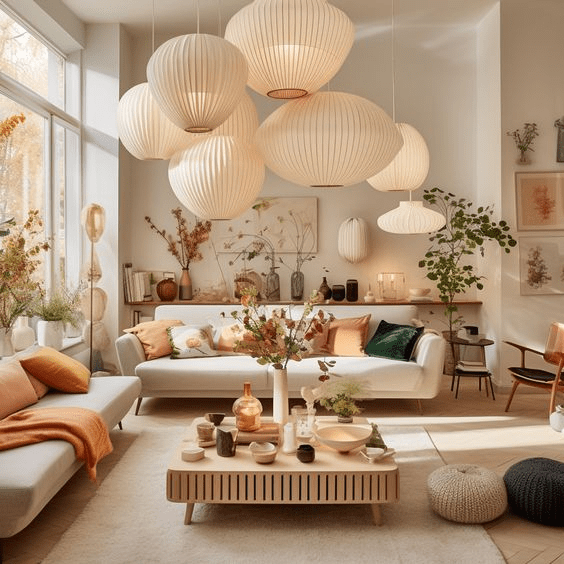
Layout: Embracing Open Spaces
Wabi Sabi living room design isn’t just about the items you fill your space with; it’s also about how you arrange them. Opt for an open and airy layout that encourages a sense of calm and tranquility:
- Minimalist Approach: Keep it simple. Avoid overcrowding your space with too many decorative elements. Let each piece breathe and stand out.
- Negative Space: Don’t be afraid of empty spaces. Wabi Sabi embraces the concept of Ma, the beauty of emptiness. Leave areas of your living room open to create a sense of balance.
- Unconventional Arrangements: Experiment with unconventional furniture arrangements. Your seating doesn’t have to be perfectly aligned. Create cozy nooks and unexpected focal points.
- Flowing Fabrics: Use flowing, imperfect fabrics like loosely draped curtains or tapestries. They add movement to the space and soften the lines.
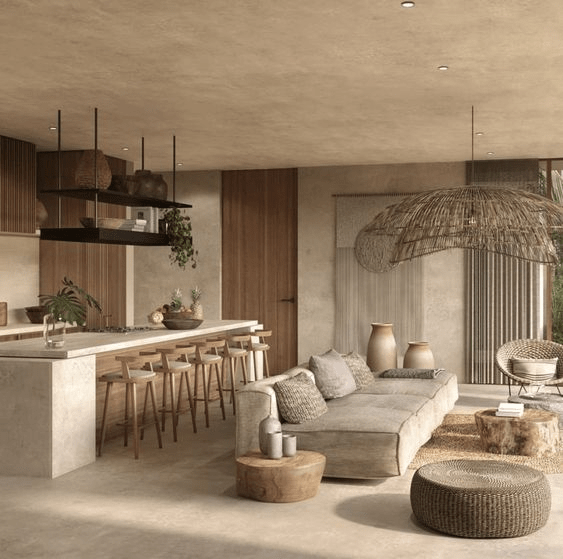
Final Tips
- In Open plan layout mix and match different ceramic pieces for an eclectic look on your dining table or shelves.
- Don’t shy away from visible mending or patches on textiles; they add to the charm!
- Choose furniture made from natural materials like bamboo, rattan, or untreated wood.
- Look for reclaimed wood furniture or DIY projects using distressed finishes.
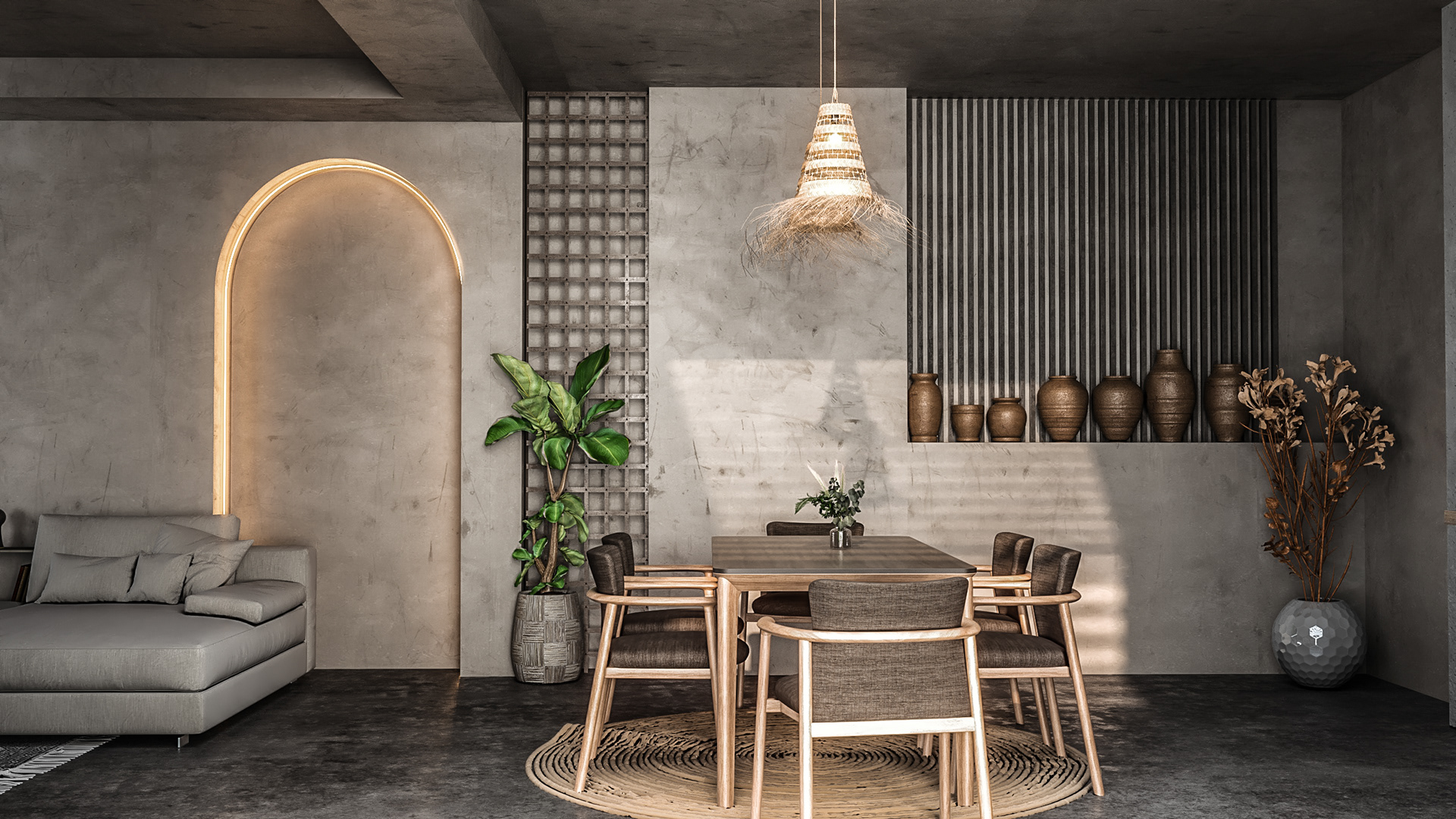
And there you have it-Wabi Sabi Living Room Ideas that celebrate the beauty in imperfection! It’s about creating a space that tells a story, where each element has its own unique character. So, let go of the pursuit of perfection and embrace the charm of the slightly worn, the weathered, and the handmade. Your living room will thank you with a warm and inviting atmosphere that’s truly one of a kind. Wabi Sabi: where imperfection meets unparalleled beauty!
FAQs
What is wabi-sabi design style?
Wabi-sabi is a Japanese design philosophy centered on embracing imperfection, simplicity, and the beauty of natural materials. It values authenticity, austerity, and the transient nature of things.
Can I mix Wabi Sabi with other design aesthetics?
Absolutely! Wabi Sabi is versatile and blends well with other styles. Mix it with Scandinavian, industrial, or even coastal decor for a unique and personalized look.
How to create a wabi-sabi home?
Create a wabi-sabi home by incorporating natural materials, embracing imperfections, simplifying decor, and choosing muted, earthy colors. Prioritize handmade and weathered items, allowing the space to evolve over time.
What are the colors for wabi-sabi style?
Wabi-sabi style favors muted, earthy tones like soft blues, greens, grays, and natural hues such as clay and stone. The palette reflects a connection to nature and simplicity.
What is wabi-sabi living?
Wabi-sabi living involves appreciating the beauty in imperfections, finding joy in simplicity, and embracing the transient nature of life. It encourages a mindful and intentional way of living.
How do I apply wabi-sabi in real life?
Apply wabi-sabi in real life by choosing handmade, unique items, decluttering, and allowing space for natural elements. Embrace the imperfect, and let personal touches and the passage of time become part of the aesthetic.
What is the best example of wabi-sabi?
Wabi-sabi can be seen in weathered pottery, aged wooden furniture, and handcrafted textiles. The Kintsugi technique, repairing broken pottery with gold lacquer, is a symbolic example of embracing imperfections and highlighting the beauty of the flawed.
Is Wabi Sabi only for people who love a rustic or bohemian style?
Not at all! Wabi Sabi can be adapted to various design styles. Whether you prefer modern, minimalist, or eclectic, you can incorporate Wabi Sabi elements to add character and warmth.
